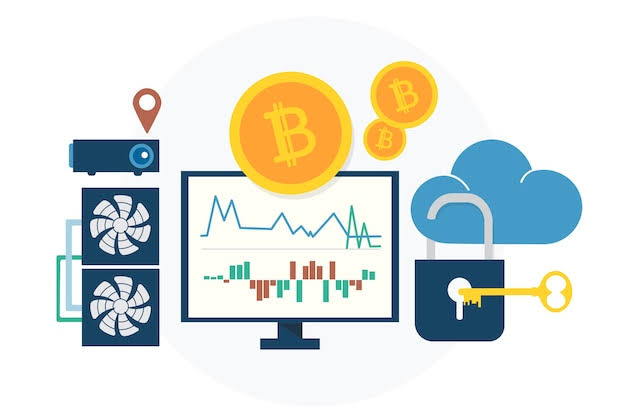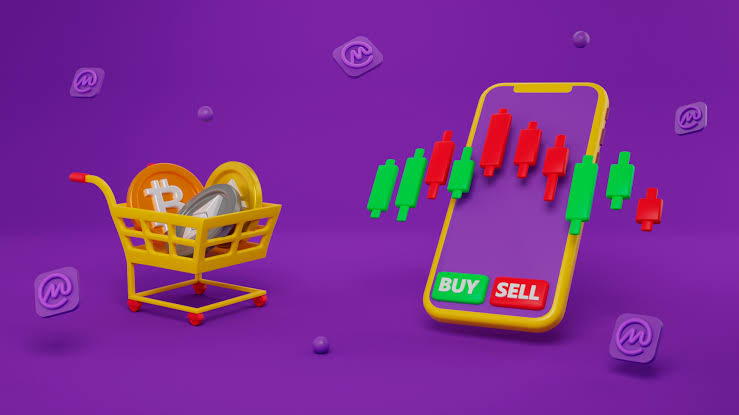Introduction to Spot Trading in Crypto

Cryptocurrency trading has revolutionized the financial landscape, offering numerous opportunities for both seasoned traders and newcomers. Among the various trading methods available, spot trading in crypto is one of the most popular and straightforward approaches. But what exactly is spot trading in crypto, and how can you leverage it to maximize your profits? In this comprehensive guide, we will delve into the world of spot trading, breaking down its mechanics, benefits, strategies, and more. Whether you’re a beginner or an experienced trader, this article will equip you with the knowledge to navigate the crypto markets confidently.
What is Spot Trading in Crypto?

Spot trading in crypto refers to the immediate buying and selling of cryptocurrencies at their current market price, also known as the “spot price.” Unlike futures or options trading, where transactions are settled at a later date, spot trading involves the direct exchange of assets in real-time. This method is widely used by traders who seek to capitalize on short-term market movements or those who want to acquire crypto assets for long-term holding.
The concept of spot trading in crypto is simple: you buy a cryptocurrency at the current market price and immediately own the asset. Conversely, if you sell, the transaction is settled instantly, and you receive the corresponding fiat currency or another digital asset in exchange. This immediacy and simplicity make spot trading an attractive option for many traders.
How Does Spot Trading Work?

Spot trading in crypto occurs on cryptocurrency exchanges, where buyers and sellers interact in real-time to execute trades. The process involves several key steps:
- Market Order Execution: When you place a market order, you’re agreeing to buy or sell a cryptocurrency at the best available price. This type of order is executed immediately, making it ideal for traders looking to enter or exit positions quickly.
- Limit Order Execution: In contrast, a limit order allows you to specify the price at which you want to buy or sell a cryptocurrency. The order is only executed if the market price reaches your specified limit. This provides more control over the trading process but may result in the order not being filled if the market doesn’t reach the desired price.
- Immediate Settlement: Once the trade is executed, the transaction is settled on the spot. The buyer receives the cryptocurrency, while the seller receives the corresponding payment. This instant settlement is a defining feature of spot trading.
- Ownership Transfer: After the trade, the buyer now owns the cryptocurrency and can choose to hold, trade further, or transfer it to a personal wallet. The seller has liquidated their position, receiving payment in fiat or another digital asset.
Buying and Selling Crypto:

Spot trading in crypto involves the direct buying and selling of digital currencies. Traders purchase or sell cryptocurrencies instantly at current market prices, making it a straightforward and efficient way to enter or exit positions.
Crypto Exchanges:
Crypto exchanges are platforms where spot trading in crypto takes place. These exchanges connect buyers and sellers, providing a marketplace where cryptocurrencies can be traded in real-time. They offer various tools and features to facilitate trading, including market orders and limit orders.
Real-Time Trading:
Spot trading in crypto is characterized by real-time trading, where transactions are executed immediately at the prevailing market price. This allows traders to react swiftly to market movements, making decisions based on the latest cryptocurrency prices.
Market Orders:
In spot trading, a market order allows traders to buy or sell crypto at the best available price in the market. It ensures quick execution, making it ideal for those looking to complete transactions instantly, without waiting for specific price levels.
Limit Orders:
A limit order in spot trading in crypto lets traders set a specific price at which they want to buy or sell cryptocurrency. The trade is only executed if the market reaches the specified price, giving traders more control over their transactions and helping them manage their entry and exit points effectively.
Advantages of Spot Trading in Crypto

Spot trading in crypto offers several advantages, making it a popular choice among both novice and experienced traders:
- Simplicity and Transparency: Spot trading in crypto is straightforward, involving clear and immediate transactions. The absence of complex contracts or delayed settlements makes it an accessible option, even for beginners.
- Real-Time Trading: The ability to execute trades in real-time allows traders to react swiftly to market changes, capitalizing on short-term price movements. This is particularly advantageous in the highly volatile cryptocurrency market.
- Ownership of Assets: In spot trading, you own the actual cryptocurrency you purchase. This ownership grants you the flexibility to hold the asset long-term, transfer it to a secure wallet, or use it for other transactions within the crypto ecosystem.
- Lower Risk Compared to Leverage Trading: Unlike margin or futures trading, spot trading does not involve borrowing funds, reducing the risk of large losses due to market volatility. This makes it a safer option for risk-averse traders.
- Liquidity: Spot markets generally offer high liquidity, enabling the easy buying and selling of assets without significantly impacting the market price. This liquidity is crucial for executing large trades efficiently.
Disadvantages of Spot Trading in Crypto

While spot trading in crypto has many advantages, it’s also important to be aware of its potential drawbacks:
- Limited Profit Potential: Since spot trading doesn’t involve leverage, your profit potential is limited to the actual price movements of the cryptocurrency. Traders cannot amplify their gains using borrowed funds, which may be a limitation for those seeking higher returns.
- Market Volatility: The cryptocurrency market is known for its extreme volatility. While this can present opportunities for profit, it also increases the risk of sudden and significant losses.
- No Hedging Options: Spot trading doesn’t offer the ability to hedge against potential losses using futures contracts or options, limiting risk management strategies for more advanced traders.
- Immediate Settlement Requirement: Spot trading requires immediate settlement, which may not always align with a trader’s financial planning or liquidity needs. This contrasts with futures trading, where settlement occurs at a predetermined future date.
Crypto spot market
Spot trading in crypto refers to the immediate exchange of cryptocurrency at current market prices. In this market, transactions are settled quickly, and ownership of the cryptocurrency is transferred instantly. Spot trading offers a straightforward approach to buying and selling digital assets without the complexities of leveraged or derivative products. This direct method appeals to traders seeking simplicity and immediate execution in their transactions.
Spot Trading vs. Other Types of Crypto Trading

To better understand spot trading, it’s helpful to compare it with other types of trading in the crypto market:
- Spot Trading vs. Futures Trading: Futures trading involves contracts to buy or sell an asset at a predetermined price on a future date. Unlike spot trading, futures trading allows for leverage, meaning traders can control larger positions with a smaller amount of capital. However, this also increases risk and complexity.
- Spot Trading vs. Margin Trading: Margin trading allows traders to borrow funds to increase their position size, amplifying both potential profits and losses. Spot trading, on the other hand, does not involve borrowed funds, making it less risky but offering lower profit potential.
- Spot Trading vs. Options Trading: Options trading involves contracts that give the trader the right, but not the obligation, to buy or sell an asset at a set price before a specific date. Spot trading is more straightforward, with immediate settlement and no complex contracts involved.
How to Start Spot Trading in Crypto

If you’re new to spot trading, here’s a step-by-step guide to help you get started:
- Choose a Reliable Crypto Exchange: The first step is to select a reputable cryptocurrency exchange that offers spot trading. Consider factors such as liquidity, fees, security features, and user interface. Popular exchanges like Binance, Coinbase, and Kraken are known for their reliability.
- Create an Account and Verify Your Identity: Most exchanges require users to create an account and complete a verification process. This typically involves providing identification documents to comply with regulatory requirements.
- Deposit Funds: Once your account is set up, deposit funds into your exchange wallet. You can deposit fiat currency (like USD or EUR) or other cryptocurrencies, depending on the exchange.
- Place a Spot Trade: With funds in your account, you can place a market or limit order to buy or sell a cryptocurrency. Carefully review the current market conditions and decide on the best strategy for your trade.
- Monitor Your Trades: After placing your trade, keep a close eye on the market and your position. Depending on your strategy, you may choose to hold your cryptocurrency, sell it at a higher price, or set a stop-loss order to protect against significant losses.
- Withdraw Your Assets: If you plan to hold your cryptocurrency for the long term, consider transferring it to a secure wallet outside of the exchange. This reduces the risk of losing your assets due to exchange hacks or other security breaches.
Key Strategies for Successful Spot Trading in Crypto

To enhance your chances of success in spot trading, consider implementing the following strategies:
- Technical Analysis: Utilize charts, indicators, and patterns to analyze price movements and identify potential entry and exit points. Common tools include moving averages, RSI (Relative Strength Index), and MACD (Moving Average Convergence Divergence).
- Fundamental Analysis: Evaluate the underlying factors that could influence the value of a cryptocurrency. This includes technology updates, partnerships, regulatory news, and market demand. Understanding the fundamentals can help you make informed trading decisions.
- Dollar-Cost Averaging (DCA): This strategy involves investing a fixed amount of money in a cryptocurrency at regular intervals, regardless of its price. Over time, this can reduce the impact of market volatility and average out your purchase price.
- HODLing: HODLing refers to holding onto your cryptocurrency for the long term, based on the belief that its value will increase over time. This strategy requires patience and a strong conviction in the asset’s future potential.
- Setting Stop-Loss Orders: Protect your investments by setting stop-loss orders, which automatically sell your assets if the price falls to a predetermined level. This helps limit potential losses and protect your capital.
- Diversification: Spread your investments across multiple cryptocurrencies to reduce risk. Diversification can protect your portfolio from significant losses if one asset underperforms.
- Staying Informed: Keep up with the latest news, trends, and developments in the crypto market. Being informed allows you to make better trading decisions and react quickly to market changes.
Risks Involved in Spot Trading in Crypto

While spot trading offers numerous opportunities, it’s essential to understand the risks involved:
- Market Volatility: The cryptocurrency market is notoriously volatile, with prices capable of swinging dramatically in short periods. While this volatility can create profit opportunities, it also increases the risk of significant losses.
- Regulatory Risks: The legal status of cryptocurrencies varies by country, and changes in regulations can have a substantial impact on the market and the value of your assets. It’s important to stay informed about regulatory developments in your region.
- Security Risks: Although cryptocurrency exchanges implement various security measures, they are not immune to hacks and cyberattacks. Storing your assets in a secure, non-custodial wallet can mitigate this risk.
- Liquidity Risks: While major cryptocurrencies like Bitcoin and Ethereum generally have high liquidity, smaller or lesser-known assets may have lower liquidity, making it harder to execute trades at your desired price.
- Emotional Trading: The volatility of the crypto market can trigger emotional responses, leading to impulsive decisions based on fear or greed. Sticking to a well-thought-out trading plan can help mitigate the impact of emotions on your trades.
Maximizing Your Success in Spot Trading

Spot trading in crypto offers a relatively simple and accessible way to participate in the cryptocurrency market. By understanding the mechanics of spot trading, employing effective strategies, and being aware of the associated risks, you can increase your chances of success.
Whether you’re looking to make short-term profits from market movements or accumulate cryptocurrency for long-term investment, spot trading provides a flexible and straightforward approach. However, as with any investment, it’s essential to conduct thorough research, stay informed about market trends, and manage your risks carefully.
Conclusion:
Spot trading in crypto is a versatile and accessible way to participate in the dynamic cryptocurrency market. By understanding the mechanics of spot trading, utilizing effective strategies, and being aware of the associated risks, traders can maximize their potential for profit while minimizing losses. As the crypto market continues to evolve, spot trading is likely to remain a key method for buying and selling digital assets, offering opportunities for both new and experienced traders.
In 2024, as the cryptocurrency market continues to evolve, spot trading remains a vital tool for traders seeking to maximize their profits and grow their portfolios. By mastering the art of spot trading, you can position yourself to take advantage of the opportunities presented by this dynamic and rapidly changing market.